30 Vegetables That Start with S
How many vegetables have you tried whose names start with S? Sure, you’ve met spinach and squash, but there’s a whole array of veggies starting with “S” waiting to be explored.
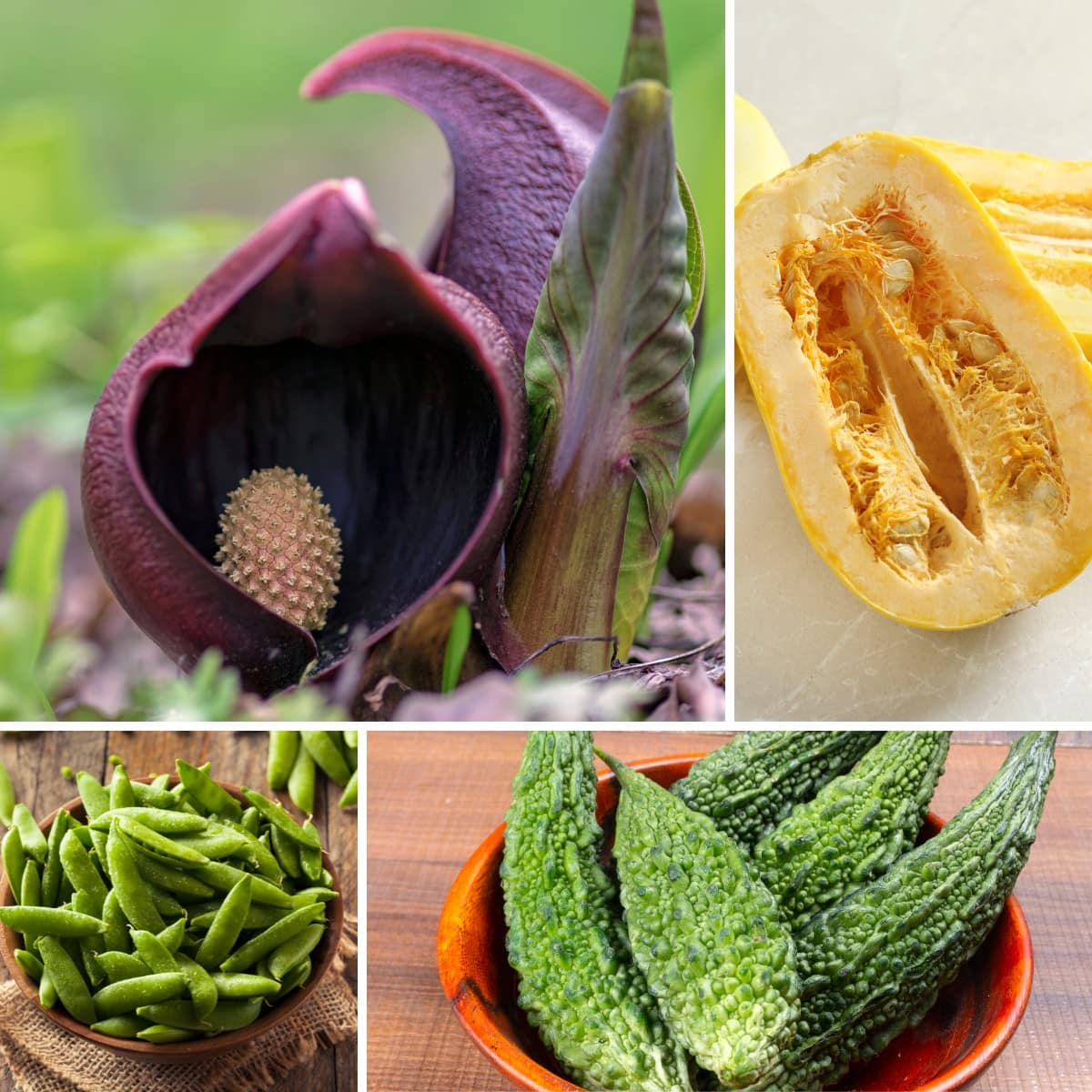
Let’s explore 30 delicious and unique vegetables that start with S. From staples to lesser-known varieties, these veggies are sure to add some excitement to your meals.
Vegetables That Start With S
1. Samphire
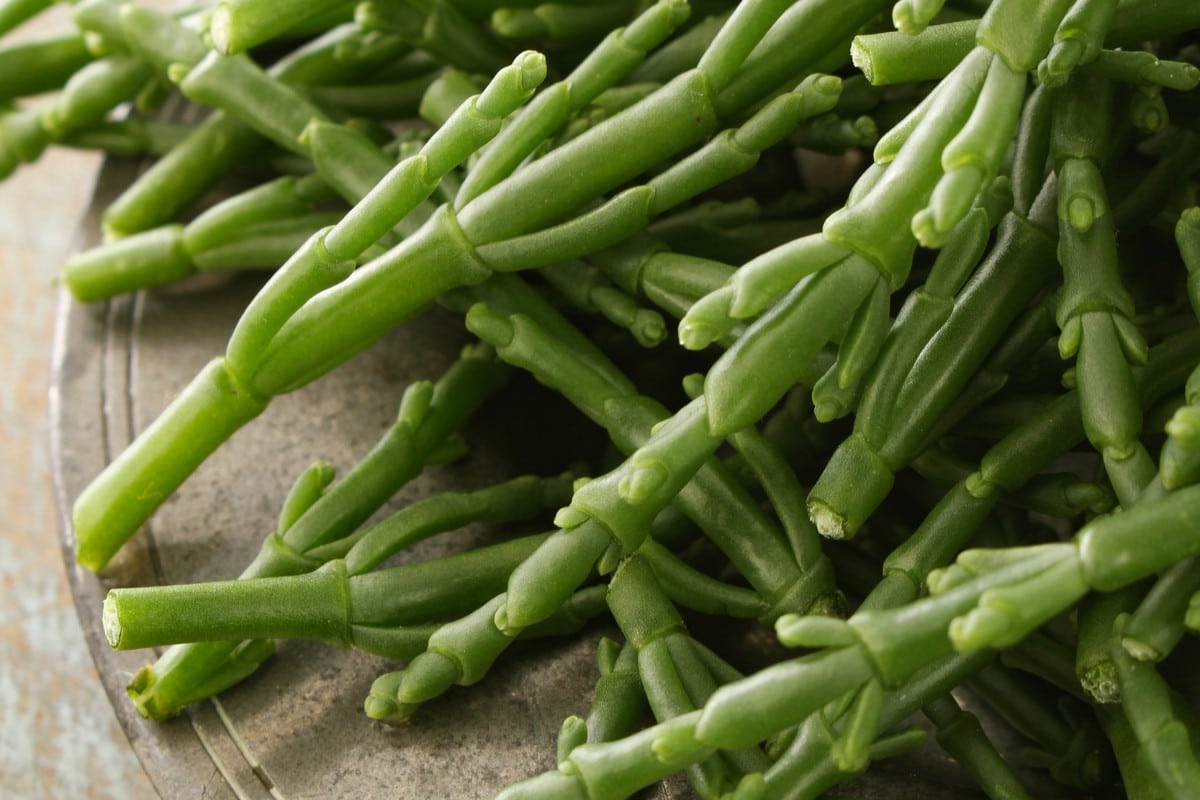
Samphire, also known as sea asparagus or sea beans, is a succulent plant that grows in coastal areas. It’s known for its salt tolerance and association with water bodies. This edible plant has vibrant green stalks, resembling baby asparagus. It has a crisp texture with a salty flavor and is often found in European coastal marshes and shores of salt lakes. Samphire can be consumed raw in salads or cooked and is sometimes pickled for preservation.
2. Salsify
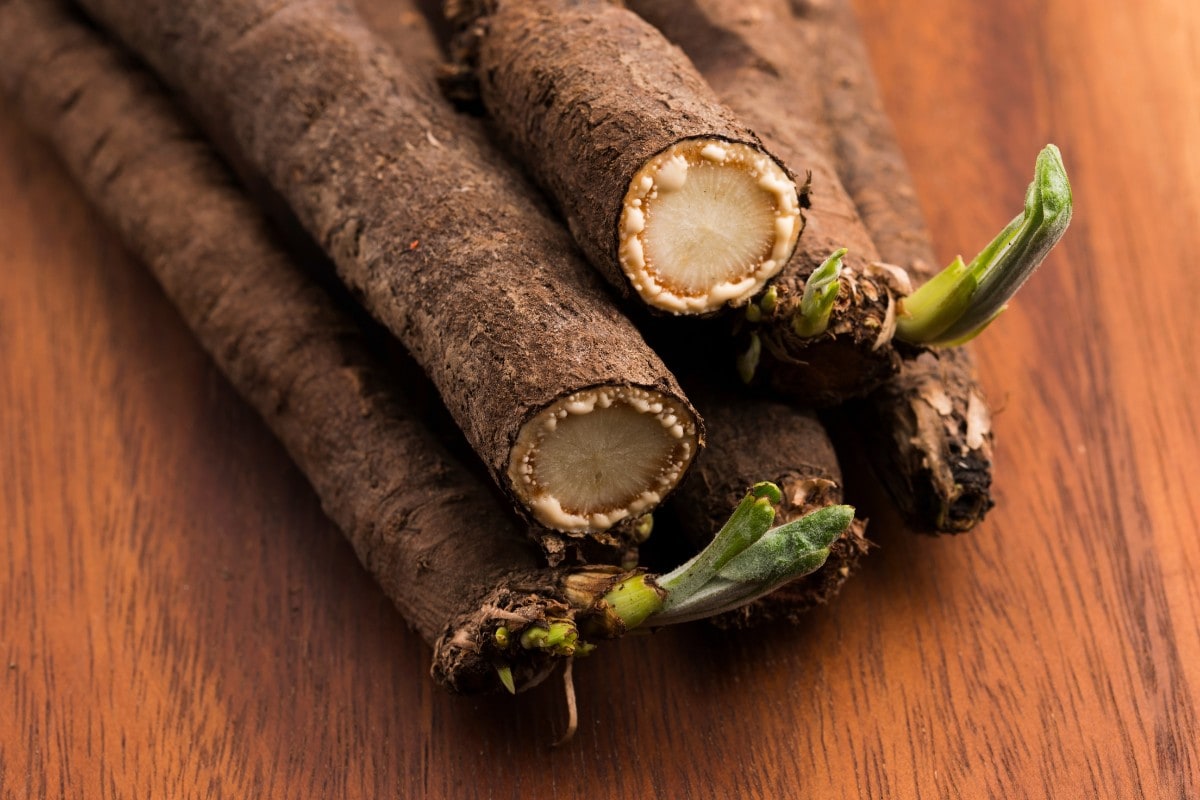
Salsify is sometimes called the “oyster plant” due to its subtle oyster-like flavor when cooked. It is a root vegetable with a long, slender shape and a tough, brown exterior. This underappreciated vegetable has a long, tapered root with creamy white flesh and a thick skin that is usually peeled before use. They are versatile in the kitchen, where they can be roasted, mashed, or used in soups and stews.
3. Scorzonera
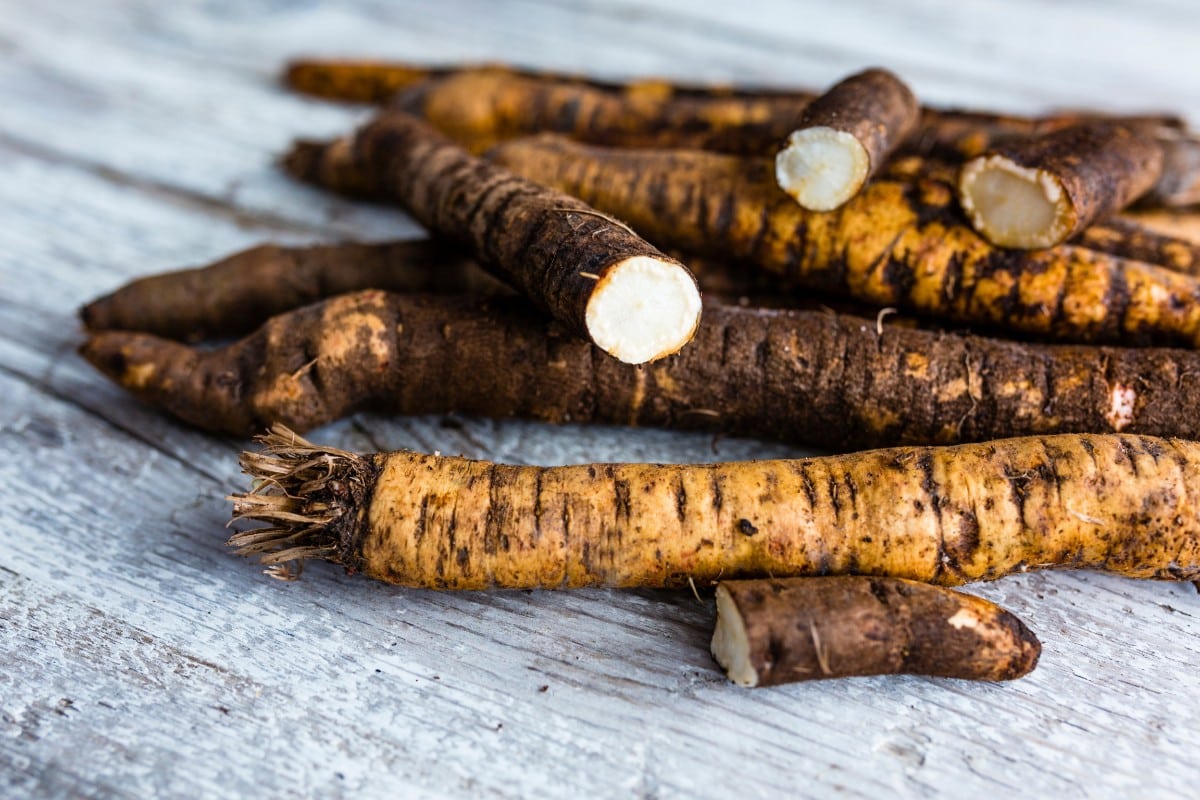
Often referred to as black salsify due to its dark skin, scorzonera is a lesser-known root vegetable that has a nutty, slightly sweet flavor. With a texture similar to that of salsify or parsnips, scorzonera is typically cooked by boiling or roasting to bring out its rich taste and tender consistency. The plant also produces attractive yellow flowers that are edible and can be added to salads.
4. Spigarello
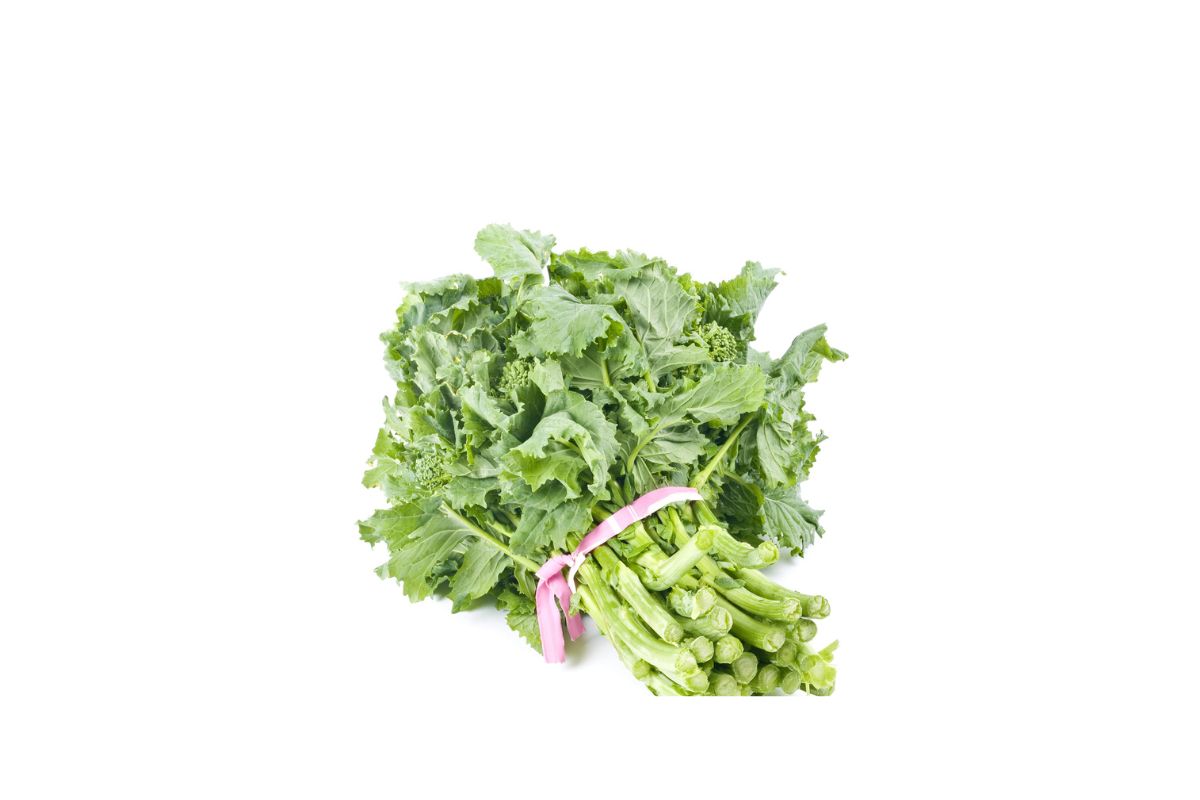
Spigarello, also known as Italian leaf broccoli, is a leafy green vegetable that is closely related to broccoli but does not form a large central head. This broccoli variety is characterized by its wavy or flat, gray-green leaves attached to slender green stems. It resembles kale or collard greens in appearance. Spigarello has a mild broccoli flavor and is often used in Italian cooking, either sautéed, blanched, or added to pasta dishes and soups.
5. Sunchokes
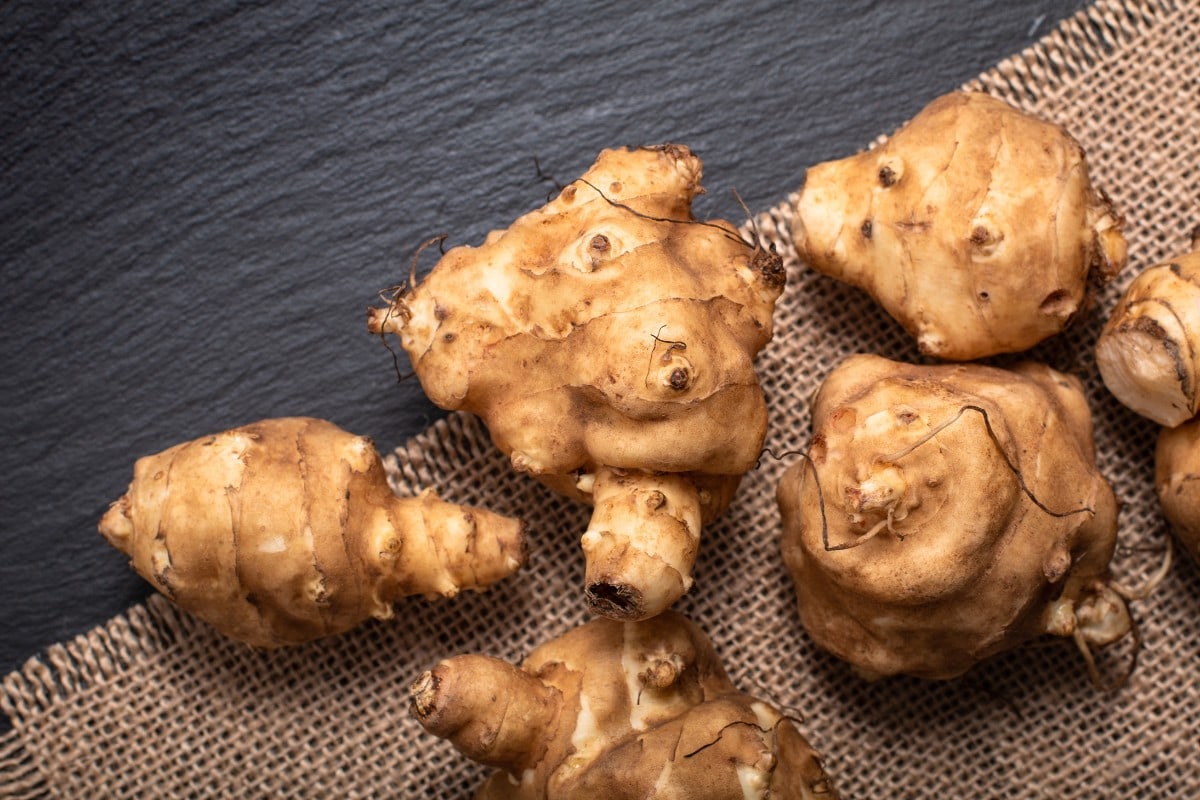
Sunchokes, also known as Jerusalem artichokes, are knobby, tuberous roots with a crisp texture and a sweet, nutty flavor reminiscent of artichokes. Despite their name, sunchokes have no relation to Jerusalem, and they are not artichokes. The name is thought to be a corruption of the Italian word for sunflower, “girasole.”
6. Snake Gourd
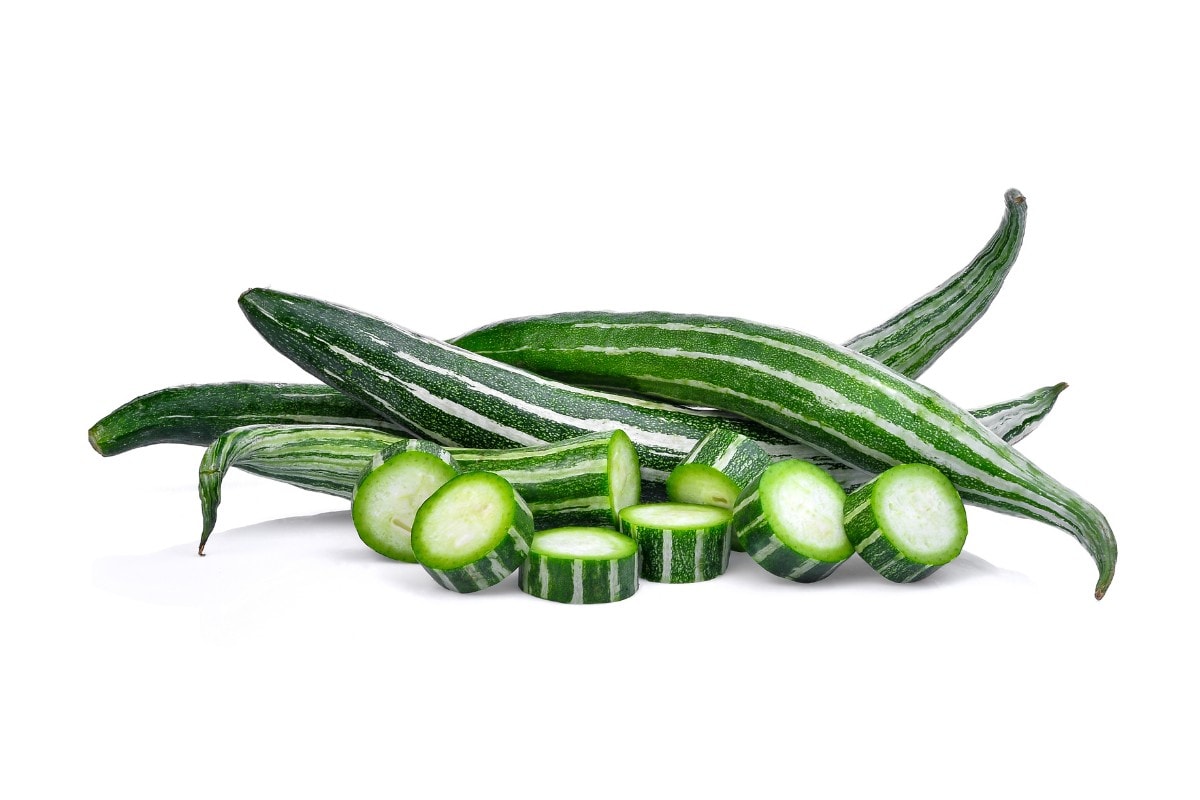
Snake gourd is a tropical vine vegetable characterized by its elongated, curved shape, and rough green skin. Despite its intimidating appearance, snake gourd features a mild, cucumber-like flavor and a soft, spongy texture when cooked. It’s commonly used in curries, stews, and stir-fries where it lends a subtle freshness and delicate taste.
7. Salsola
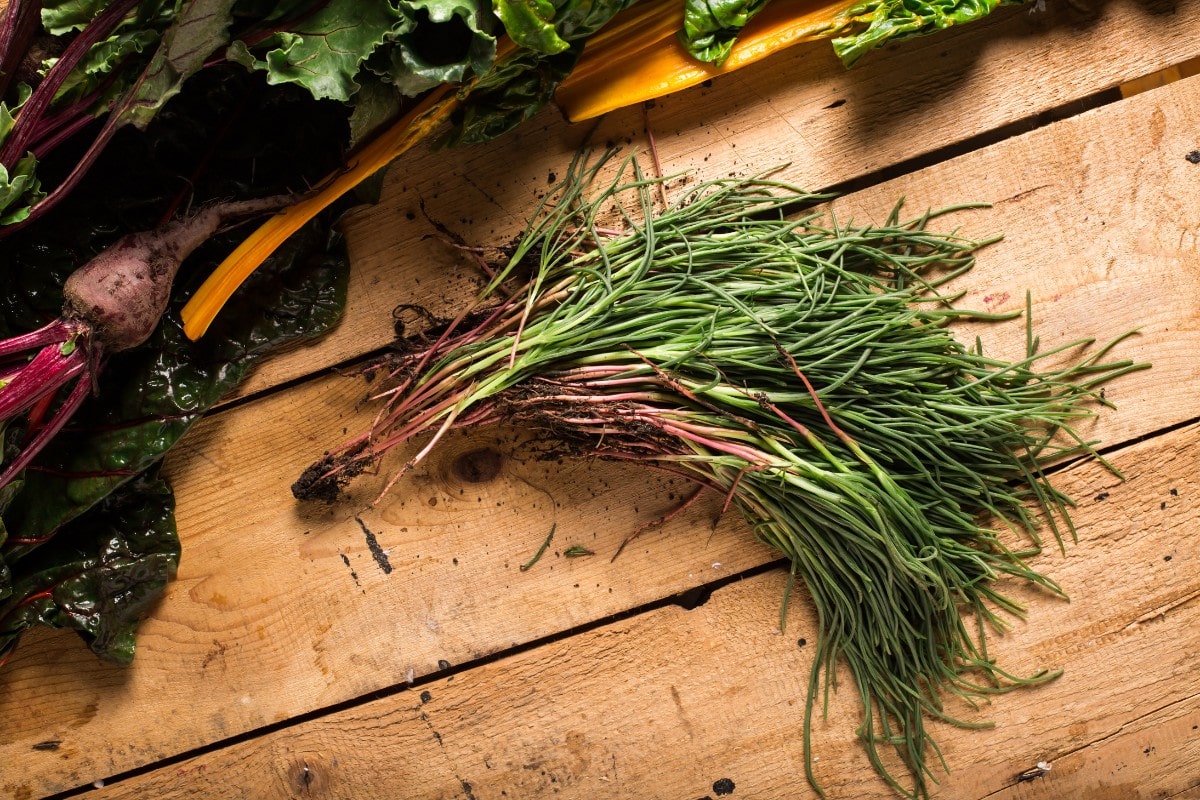
Salsola, also known as agretti or barba di frate, is a leafy green vegetable native to Mediterranean regions. It has tender, needle-like leaves and a tangy flavor profile. Salsola is used raw in salads or lightly cooked as a side dish. It offers a unique crisp texture and distinctive taste quite similar to spinach and asparagus.
8. Satoimo
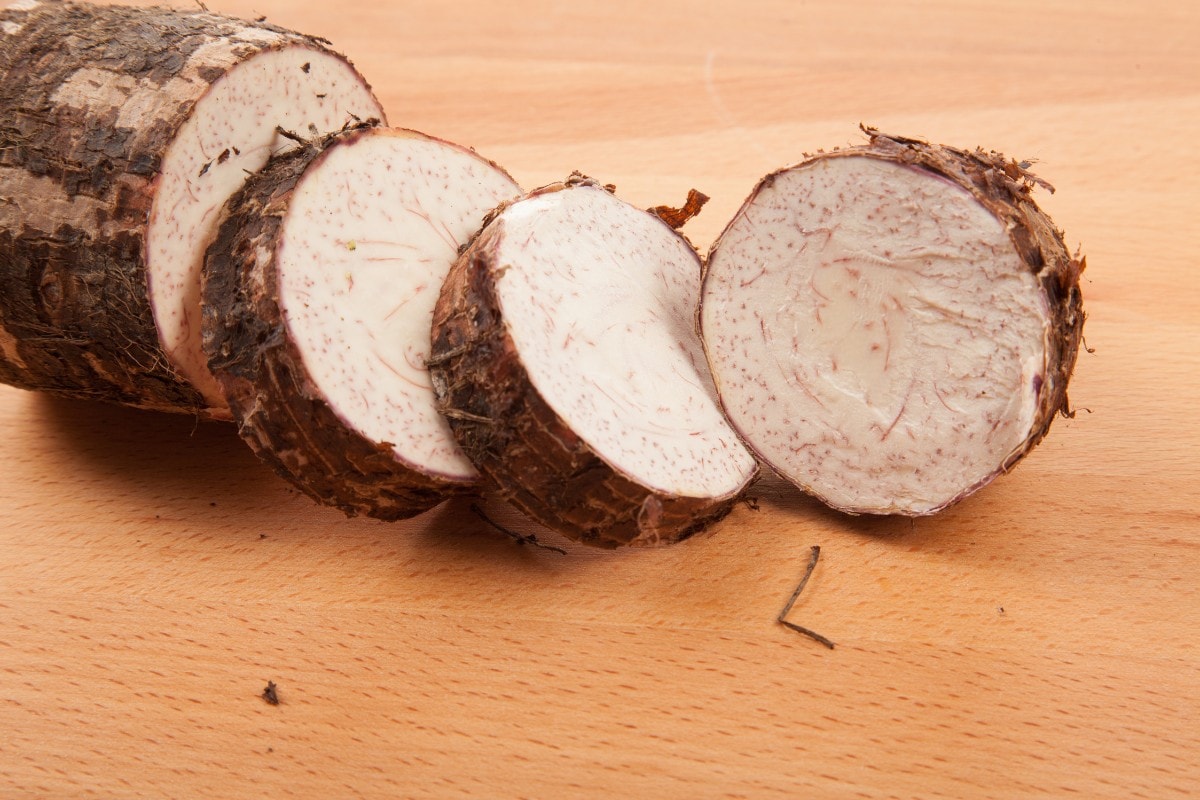
Satoimo, also known as Japanese taro, is a starchy root vegetable with a creamy white flesh and a slightly sweet taste. It is a staple in traditional Japanese cuisine, known for its small size and slimy texture when peeled. The tuber is mainly composed of starch, but also contains a small amount of protein. In Japanese culture, satoimo is associated with longevity and is often used in dishes served during the New Year and other celebratory occasions.
9. Stinging Nettle
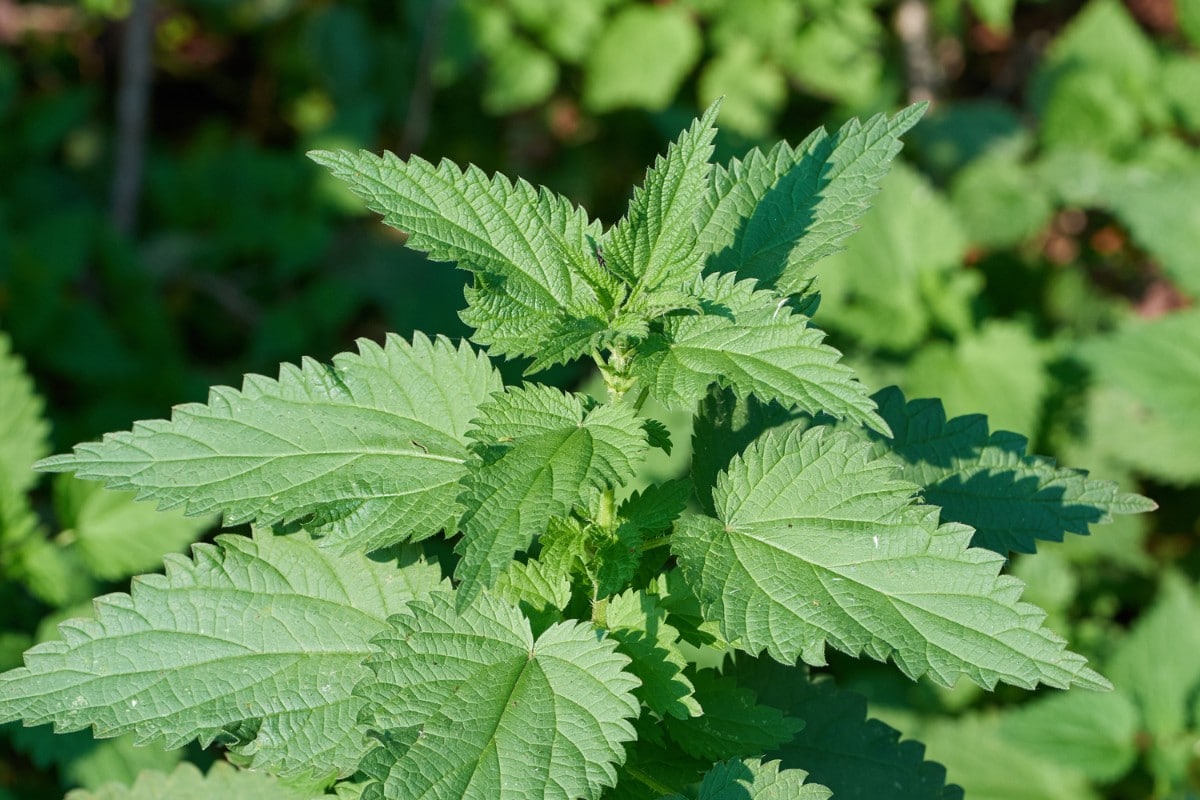
Stinging nettle is a perennial flowering plant, which is distinguished by its fine hairs that can deliver a stinging sensation upon contact. This herbaceous plant is found in many parts of the world and while often considered a weed, it is most certainly a useful and edible weed and is often used in teas, soups, and sautés. The young leaves of stinging nettle can be cooked and eaten as a nutrient-rich leafy green.
Despite its defensive mechanism against being touched in the wild, when properly prepared, the stinging compounds are neutralized, making the leaves safe to consume.
10. Shungiku
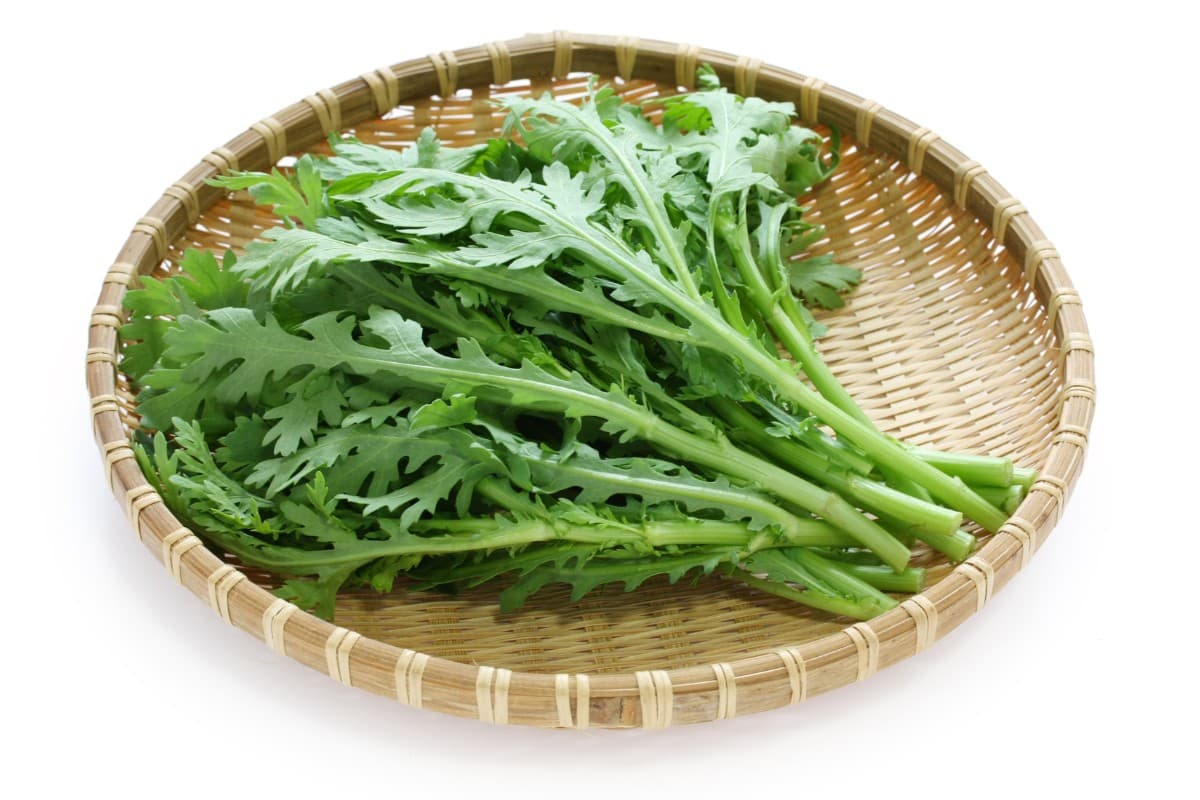
Shungiku, also known as edible chrysanthemum greens, are the leafy parts of the Chrysanthemum plant. They have tender, serrated leaves and a slightly bitter taste reminiscent of spinach or mustard. These greens can be enjoyed in a variety of ways, such as steamed, blanched, stir-fried, or used fresh in salads. The plant is also easy to grow and it can provide a continuous harvest as it grows back after cutting.
11. Spaghetti Squash
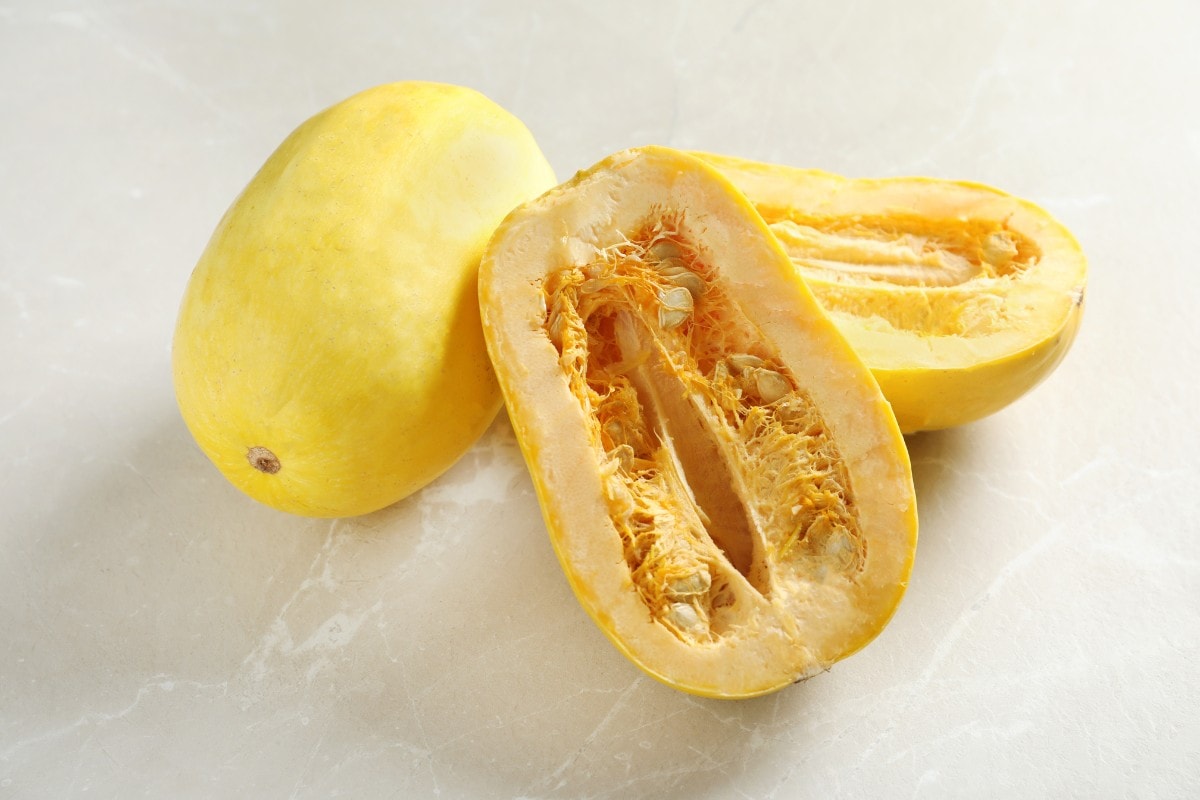
Spaghetti squash is a medium-sized winter squash with an oblong shape and a creamy yellowish skin. It’s known for its stringy flesh that, when cooked, separates into spaghetti-like strands. This vegetable has a mild, slightly sweet flavor and can be a low-carb alternative to pasta. It can be baked, boiled, steamed, air-fried, or microwaved, and the flesh can be topped with sauces, incorporated into casseroles, or used as a base for various dishes
12. Summer Squash
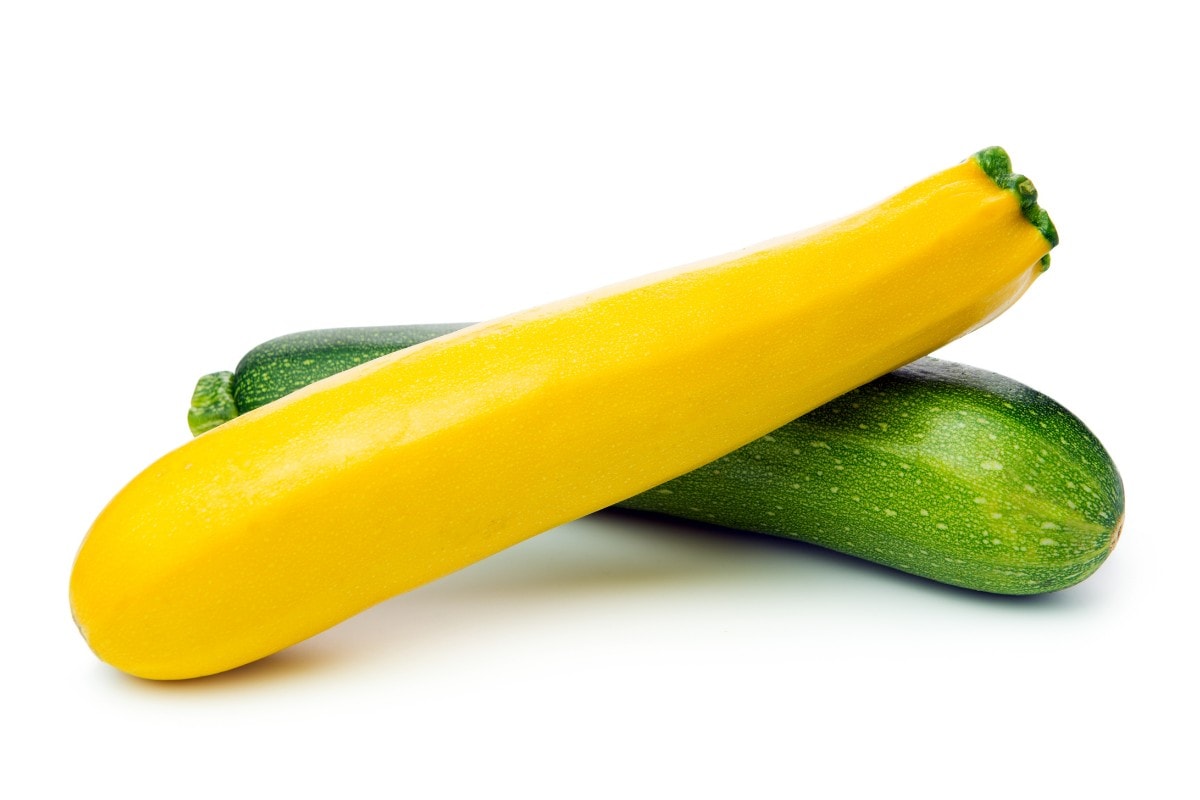
Summer squash is a term that encompasses a variety of squash species, including pattypan squash and zephyr squash. These squashes are known for their soft skin, high moisture content, and mild flavor. Pattypan squash, for instance, is distinctive for its small, round, and scalloped shape, and can be grilled, air-fried, sautéed, or stuffed. Zephyr squash, on the other hand, has a unique two-tone color, with a straight yellow neck and a pale green bottom, and is known for its sweet, nutty flavor.
13. Shiso
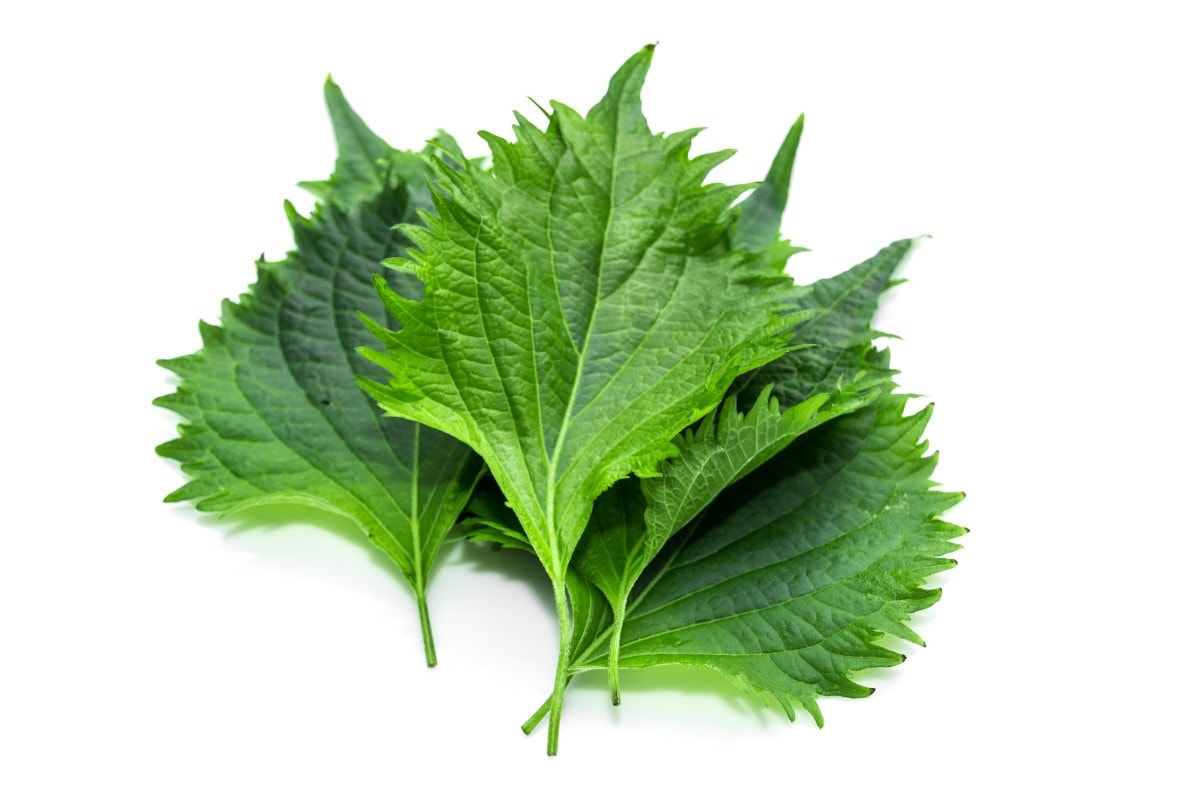
Shiso, also known as Japanese perilla, is a fragrant herb with serrated leaves and a distinctive flavor profile often described as a combination of mint, basil, and anise. It’s widely used in Japanese, Korean, and Southeast Asian cuisines in dishes such as sushi, salads, and pickles. There are two main varieties of shiso: green and red. Green shiso is often used fresh, while red shiso is typically used in pickling to impart color and flavor.
14. Sisymbrium
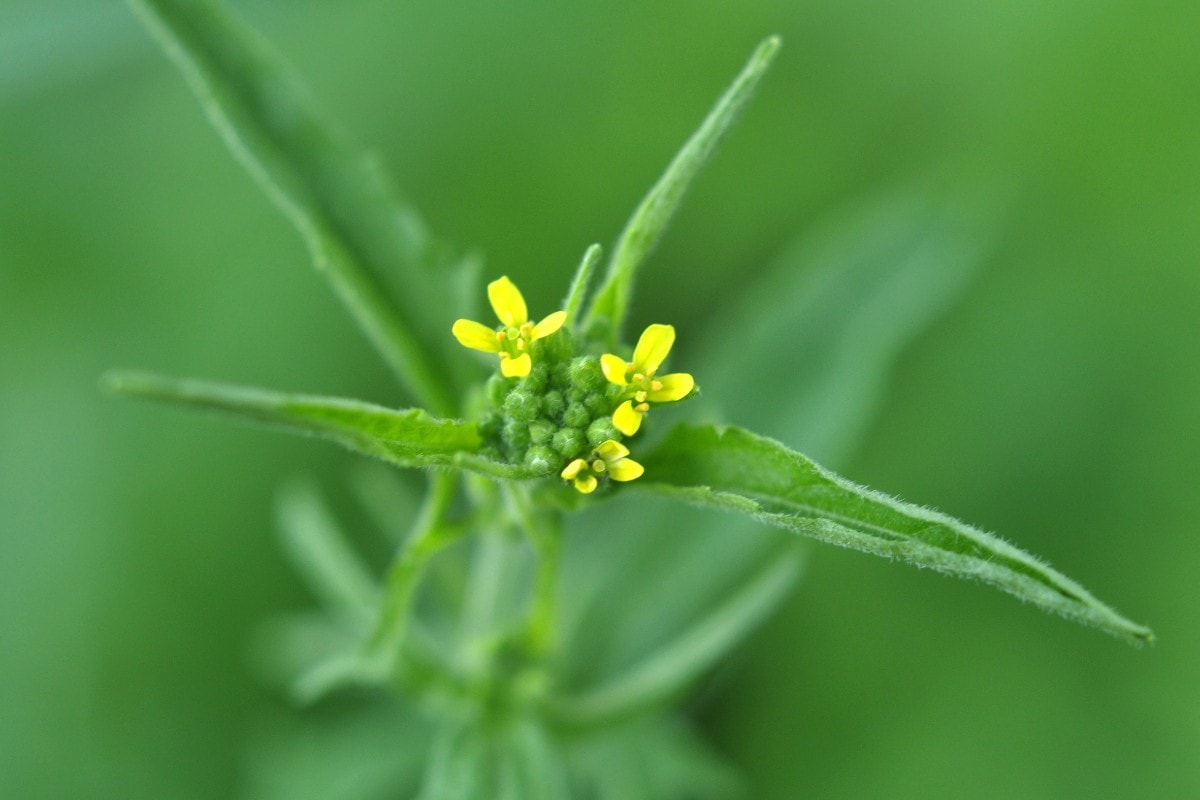
Sisymbrium officinale, commonly known as hedge mustard, is a plant in the Brassicaceae family, which is the same family as cabbage and broccoli. Originally from Europe, this species has spread to many parts of the world. Hedge mustard has small, yellow flowers with four petals, which are arranged in a candelabra-like branching cluster. The plant is known for its initial low rosette of basal leaves before it bolts into an upright flowering stem. It is often found in disturbed ground such as roadsides and fields, thriving in a variety of soil conditions.
15. Skirret
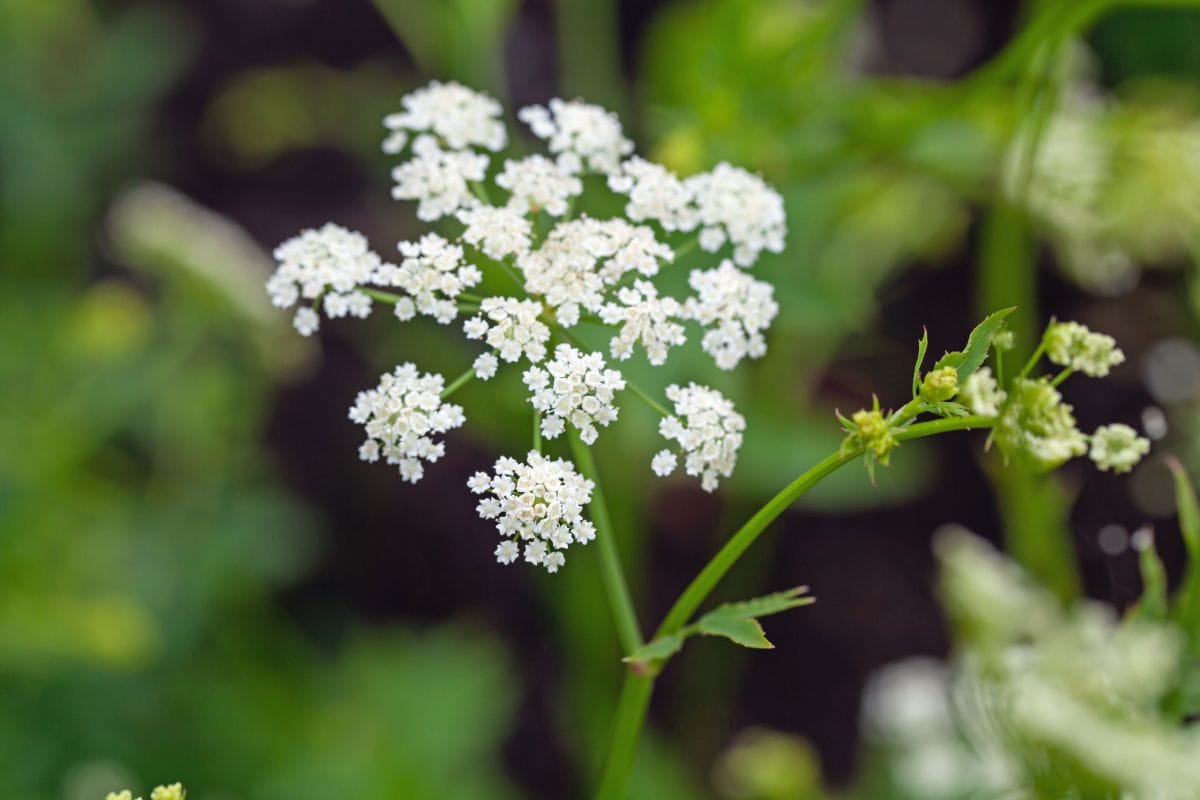
Skirret (Sium sisarum) is a perennial root vegetable known for its cluster of sweet, white, edible roots. It was once a popular crop in Europe before the rise of the potato. Skirret’s roots are composed of numerous slender, sweet-tasting tubers which have been described as having a flavor similar to a cross between potatoes and carrots.
16. Suran
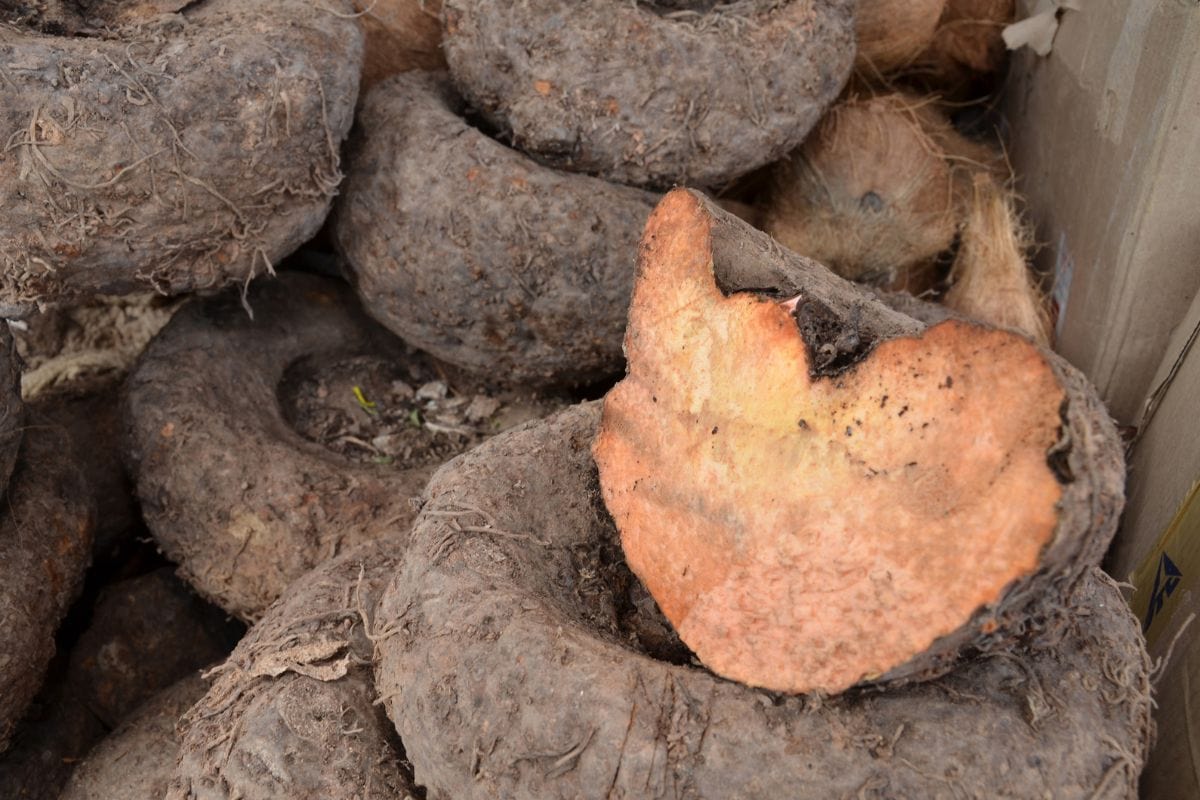
Suran, or elephant foot yam, is a tropical tuber plant native to Southeast Asia. This plant is notable for its large, corm-like tubers that are used as a starchy food source, similar to yams or potatoes. Suran is known for its high starch content, which can be modified for use as a food thickener. The plant itself can grow quite large, with a tall, umbrella-like foliage structure that can reach up to 2 meters in height.
17. Soko
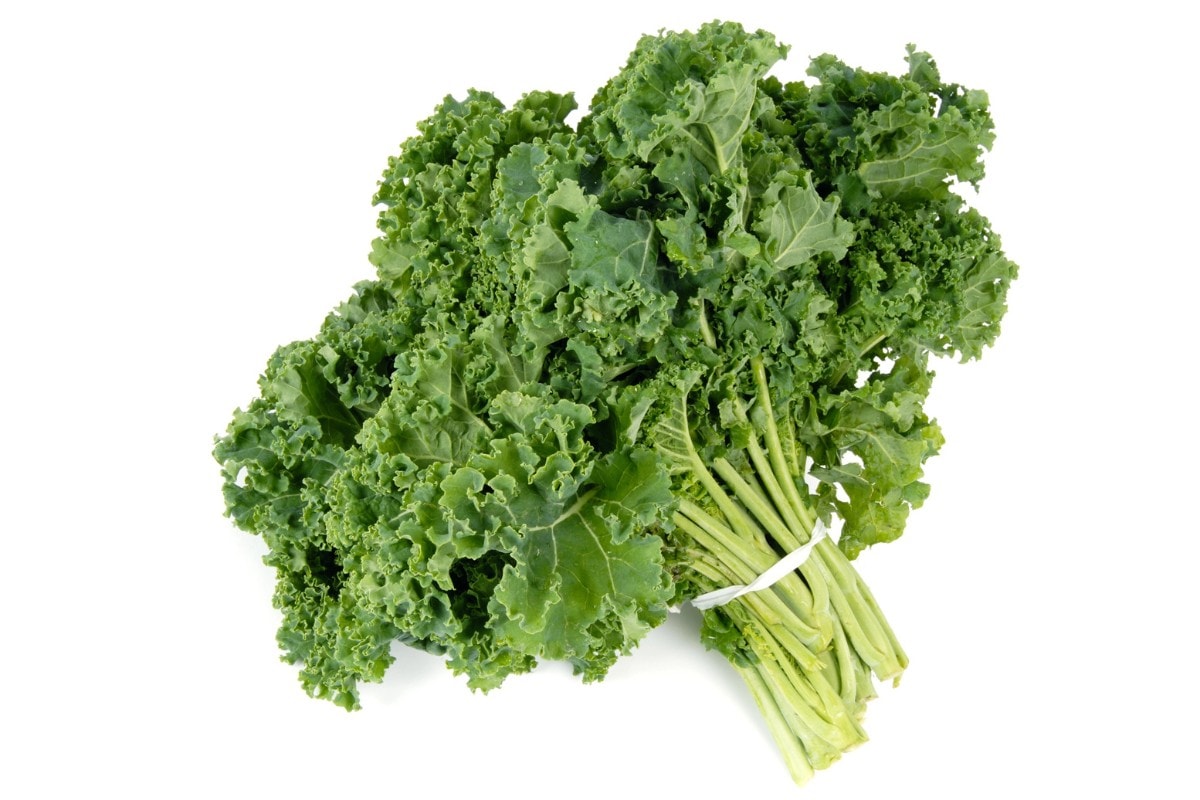
Soko, also known as African kale or Ethiopian mustard, is a leafy green vegetable that is a variety of Brassica carinata, closely related to kale and mustard greens. It is a staple in many African countries, particularly in Western and Central Africa, where it is valued for its nutritious leaves. Soko is known for its slightly bitter flavor with a mustard-like kick. It is commonly used in soups, stews, and sautéed dishes. The plant is resilient, grows quickly, and is tolerant of poor soil conditions.
18. Salsola Soda
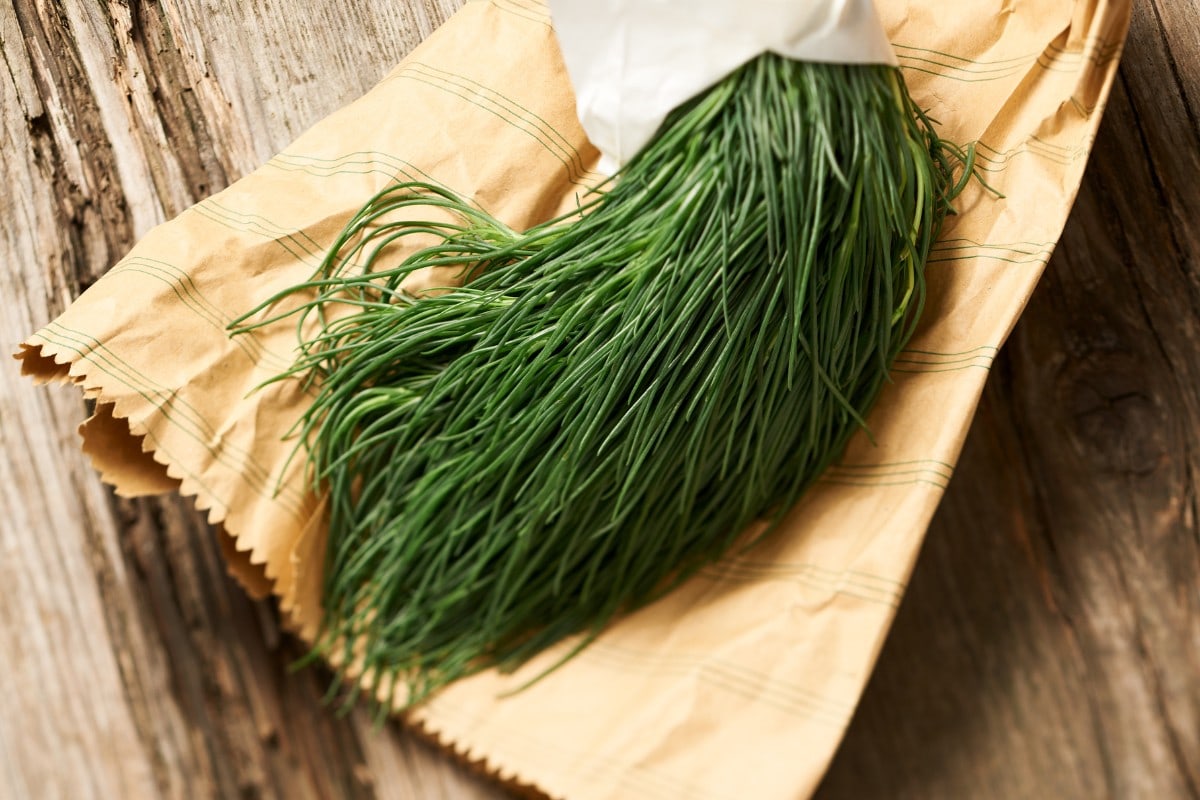
Salsola soda, commonly known as barilla plant or opposite-leaved saltwort, is an annual, succulent plant native to the Mediterranean region. It has fleshy, glabrous leaves and stems, which are often branched from near the base and can grow to a height of 15–45 cm (6–18 inches). Historically, Salsola soda was an important source of soda ash, which was used in glassmaking and soap production before the development of synthetic alternatives. The plant thrives in saline environments, and its leaves can be eaten raw or cooked, offering a taste reminiscent of seaweed or samphire with a slightly salty flavor.
19. Sea Kale
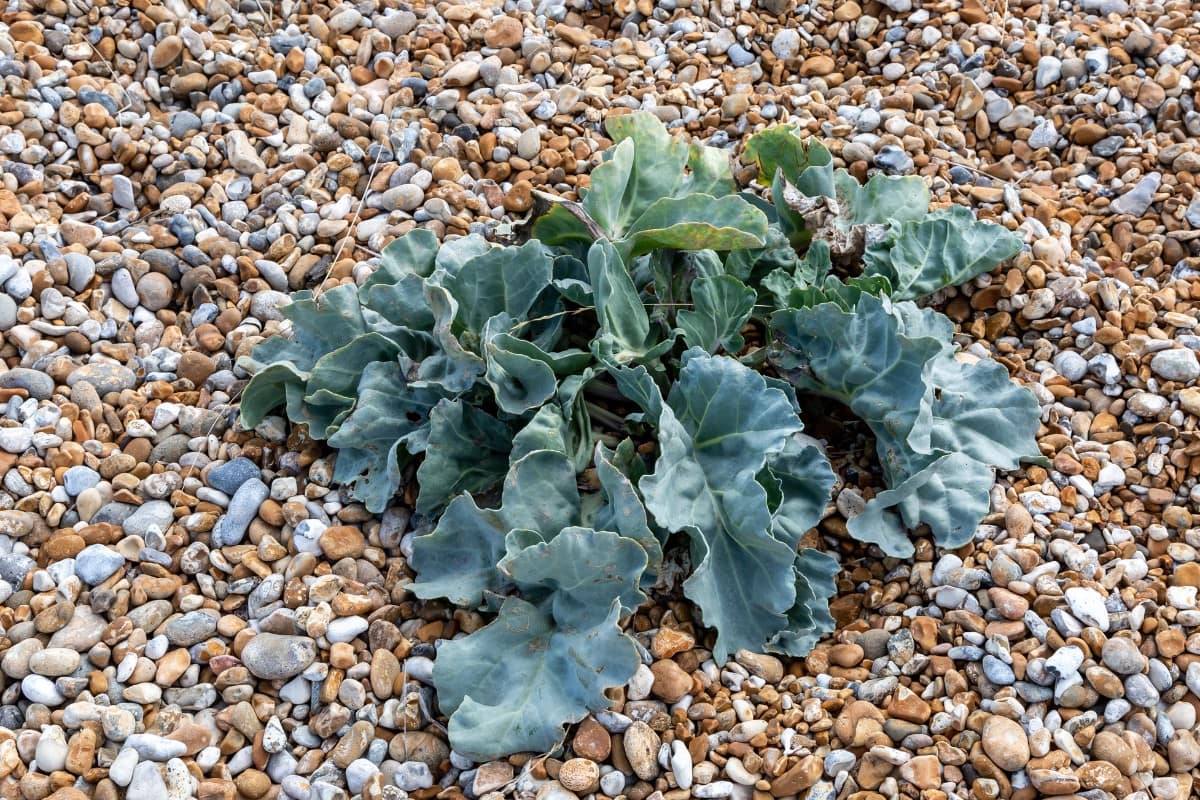
Sea kale is a perennial plant native to the coasts of Europe, from the North Atlantic to the Black Sea. It is cultivated for its bluish-green, waxy leaves, which can be eaten as a vegetable, and for its attractive white flowers that bloom in early summer. The plant prefers well-drained, sandy soils and is tolerant of salt spray, which makes it suitable for coastal gardening. Sea kale was historically used by European sailors to prevent scurvy due to its high vitamin C content. The shoots of sea kale are edible and can be blanched and eaten similarly to asparagus, while its roots can be cooked like parsnips.
20. Snap Peas

Snap peas, also known as sugar snap peas, are a cultivar of edible-podded peas with rounded pods and thick pod walls. Unlike other pea varieties, snap peas are known for their crisp texture and sweet flavor, which make them enjoyable to eat whole. They are a cross between snow peas and garden peas. They are often eaten raw in salads, lightly steamed, or stir-fried. Their crunchy texture and sweetness make them a popular snack. Additionally, snap peas are low in calories, making them a healthy addition to any diet.
21. Skunk Cabbage

Skunk cabbage, scientifically known as Symplocarpus foetidus, is a perennial wetland plant known for its distinctive foul odor, which resembles that of a skunk. Native to the woodlands and swamps of Eastern North America, skunk cabbage is one of the first plants to emerge in the spring. While all parts of the plant contain calcium oxalate crystals that can irritate when raw, some parts of the plant are considered edible when properly prepared. The young leaves can be thoroughly cooked to break down the crystals, and historically, they have been used as a food source by Indigenous peoples and settlers. However, caution is advised, as improper preparation can lead to an unpleasant burning sensation in the mouth and throat.
22. Sea Spinach
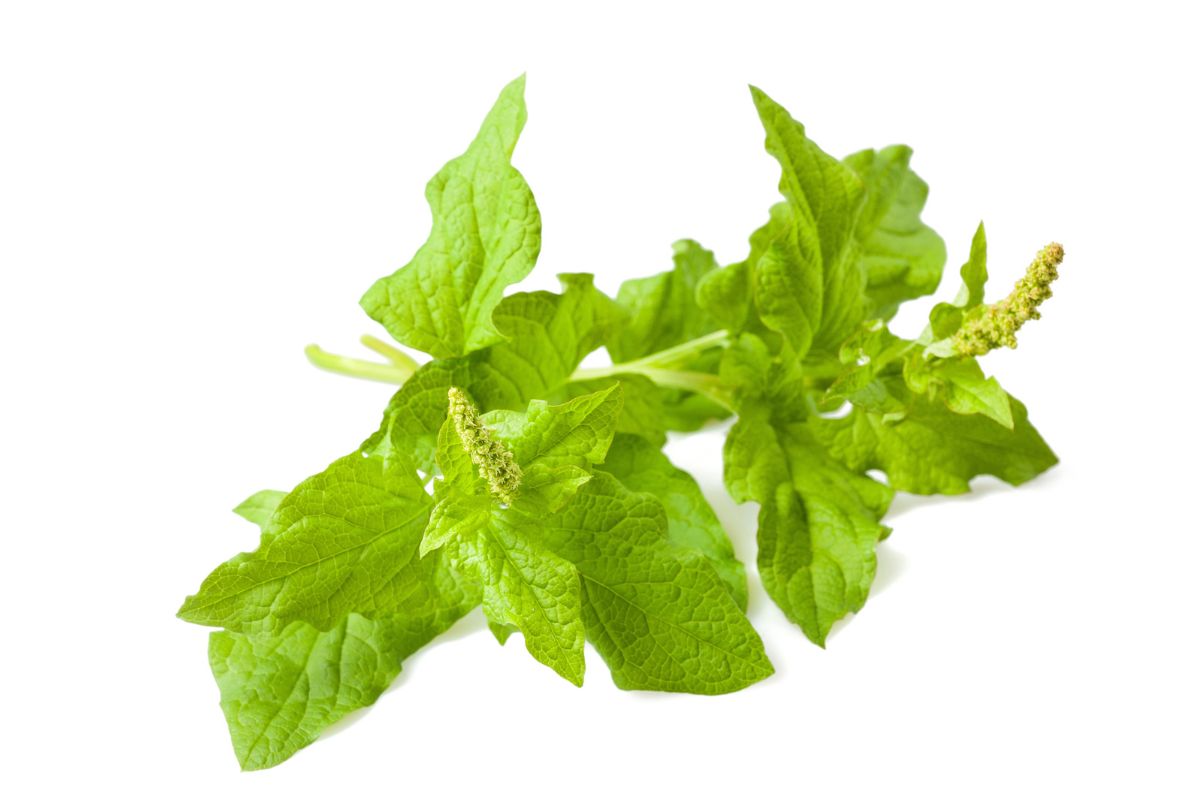
Sea spinach, also known as sea beet or beach mustard, is a wild relative of beetroot and Swiss chard. It grows along the coasts of Europe and parts of the Mediterranean and Atlantic coasts of Africa. This hardy, perennial plant is tolerant of salty and sandy soils, often found in coastal areas where few other edible plants can thrive. Sea spinach’s fleshy, glossy leaves are rich in nutrients and they can be eaten raw in salads or cooked like spinach. It has a slightly salty and succulent flavor.
23. Shallots
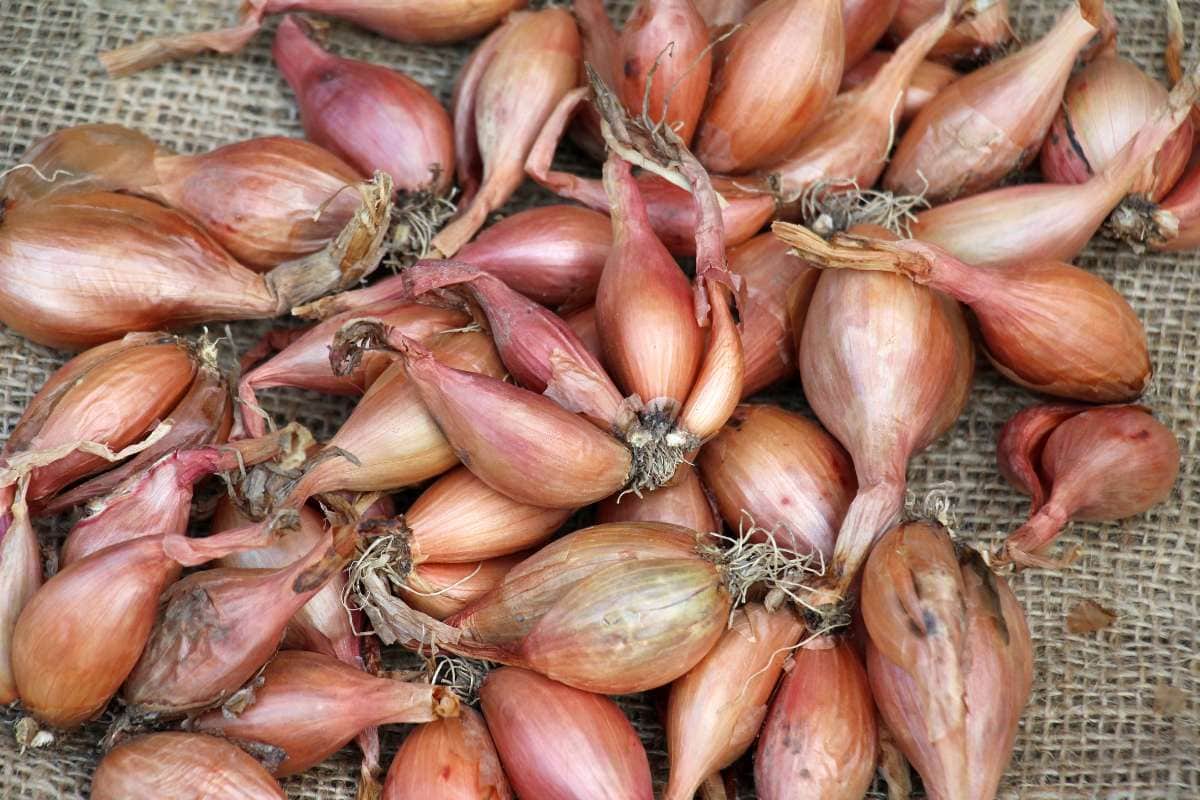
Shallots are a type of onion, specifically a botanical variety of the species Allium cepa, valued for their mild and sweet flavor. They grow in clusters, where separate bulbs are attached at the base and encased by a common papery skin, much like garlic. They are used in cooking for their ability to impart a subtle yet deep flavor to dishes and are preferred over onions in many fine dining recipes because of their delicate taste.
24. Sea Lettuce
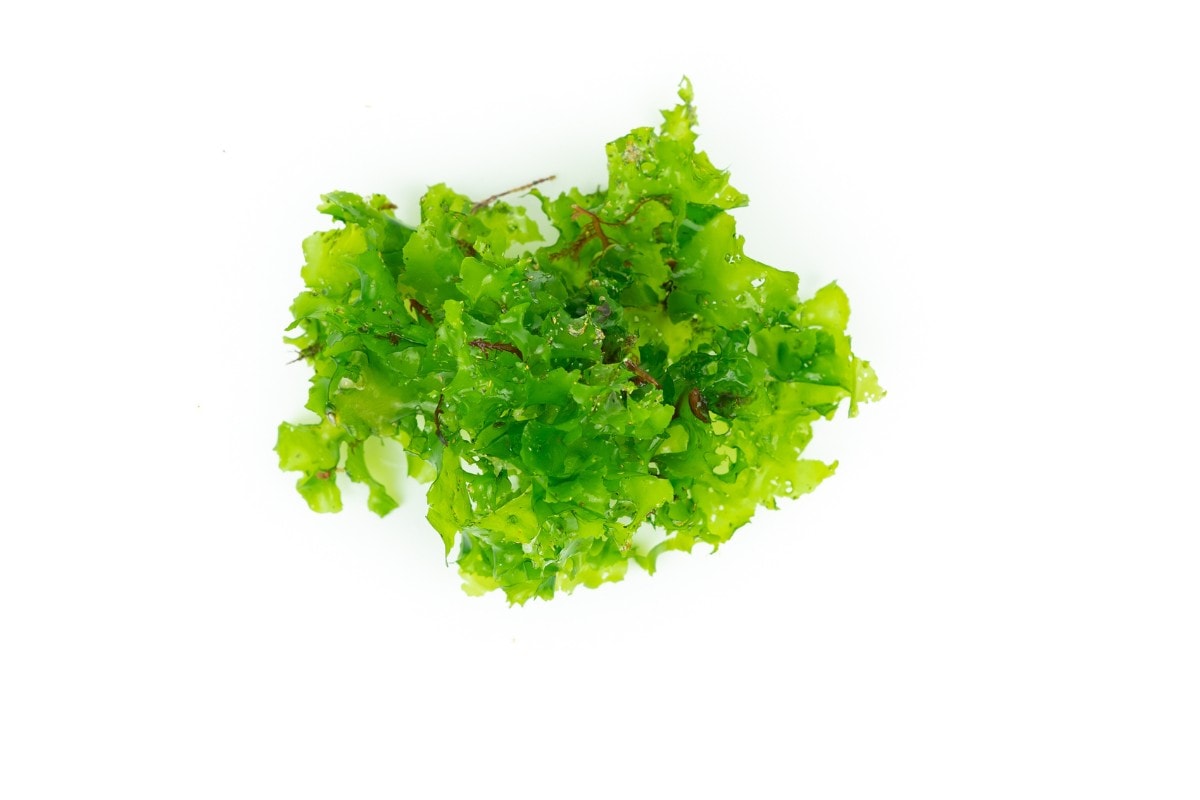
Sea lettuce is a type of edible green seaweed commonly found along rocky shorelines and in shallow, brackish waters. It is bright green, with thin, sheet-like fronds that are translucent and can grow up to 30 cm or more in length. Sea lettuce is important ecologically, as it provides essential habitat for marine life. However, when present in excessive amounts, it can contribute to harmful algal blooms, which may have negative impacts on marine ecosystems.
25. Sorrel
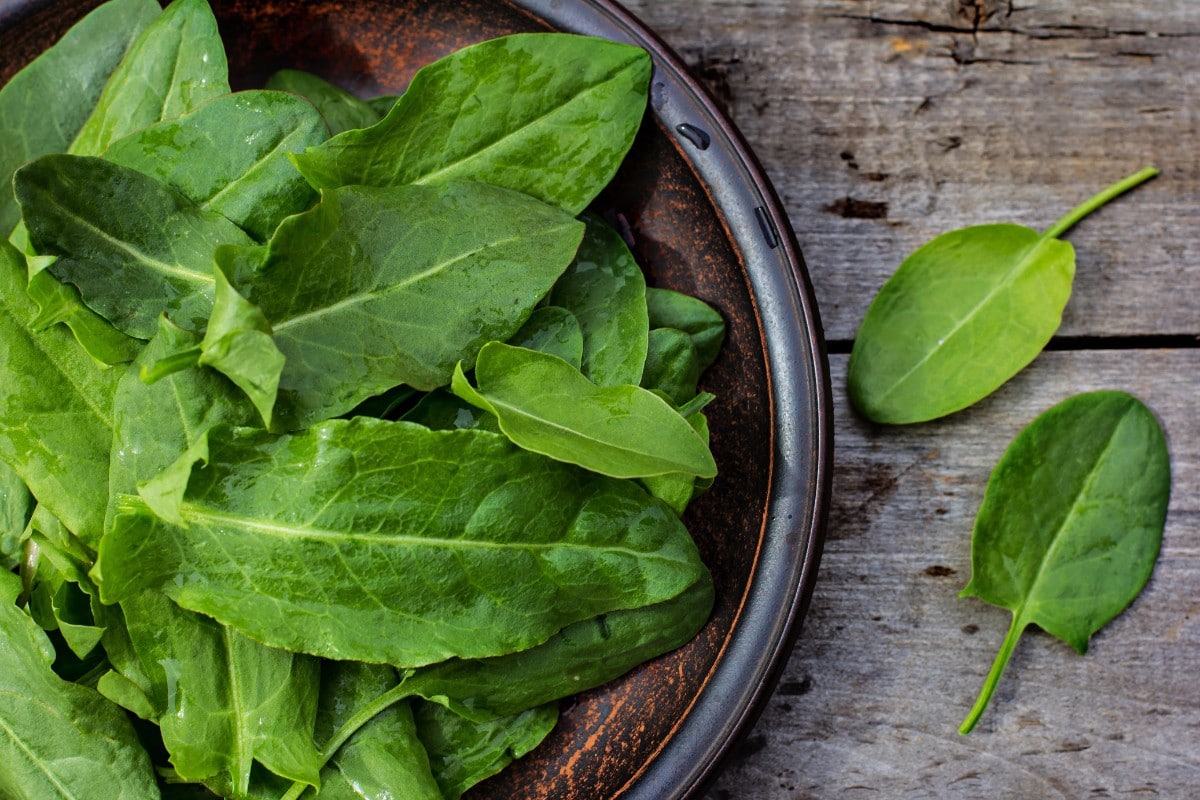
Sorrel is a leafy green herb with a tangy, lemony flavor. The plant produces arrow-shaped leaves that are commonly used in salads, soups, and sauces. Sorrel has been used traditionally for its potential health benefits, including aiding digestion and strengthening the immune system. The sharp, sour taste of sorrel is due to the presence of oxalic acid, which should be consumed in moderation, especially by individuals with kidney conditions or rheumatism.
26. Sweet Meat Squash
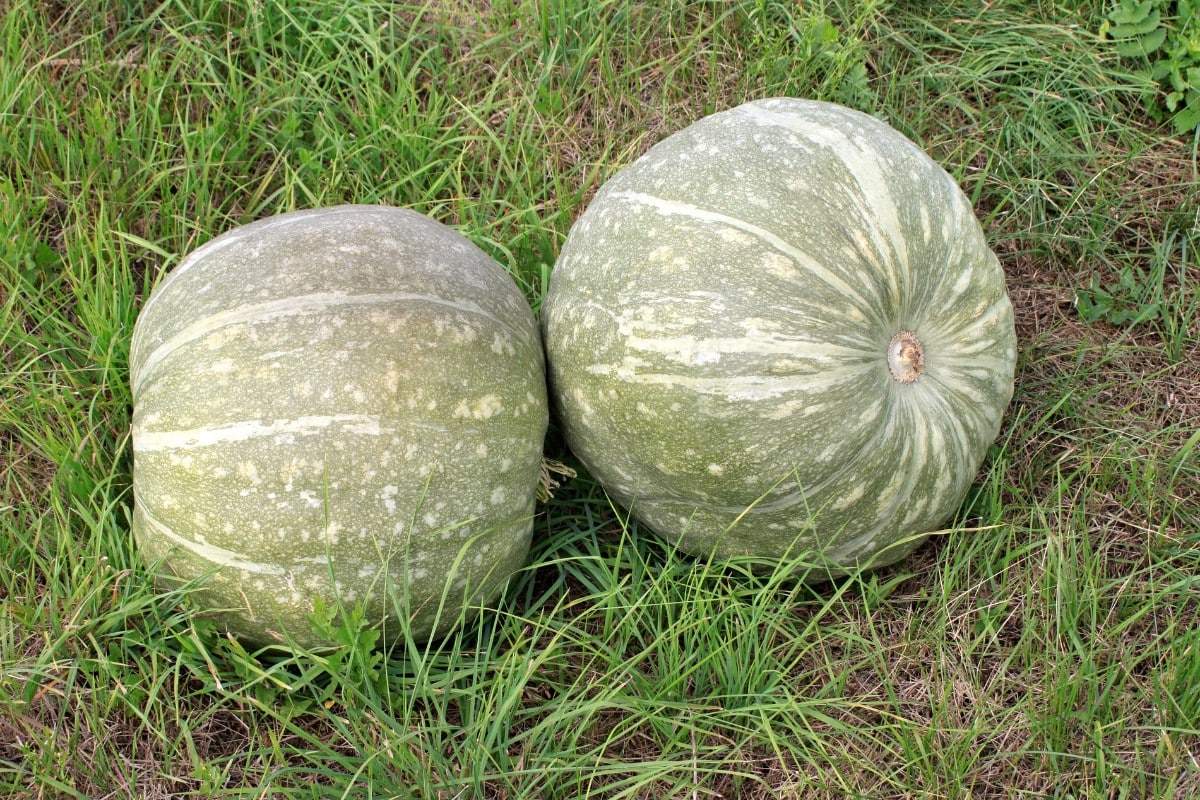
Sweet meat squash is a variety of winter squash known for its sweet flavor and excellent keeping quality. The squash typically weighs 10–15 pounds and has a slate-gray, round exterior with dense, orange, fine-grained flesh inside. Sweet meat squash is considered the best variety to use in pumpkin pies due to its unsurpassed flavor.
27. Silverbeet
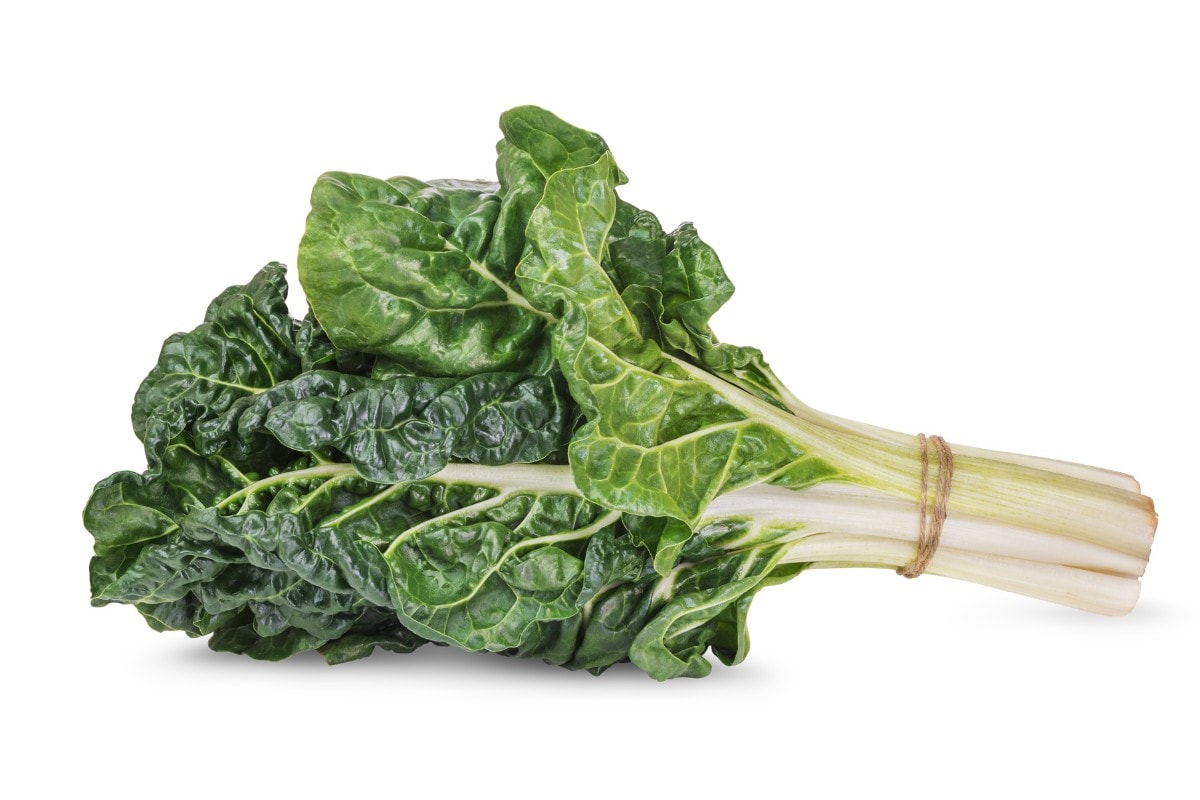
Silverbeet, also known as Swiss chard, is grown for its large, tender edible leaves and stalks. It has a slightly bitter taste that can become milder when cooked. The leaves are typically dark green, while the stalks can be a variety of colors, including white, red, or yellow, adding visual appeal to dishes. Silverbeet can be used in a wide range of recipes, from salads and sautés to quiches and gratins.
28. Sea Aster
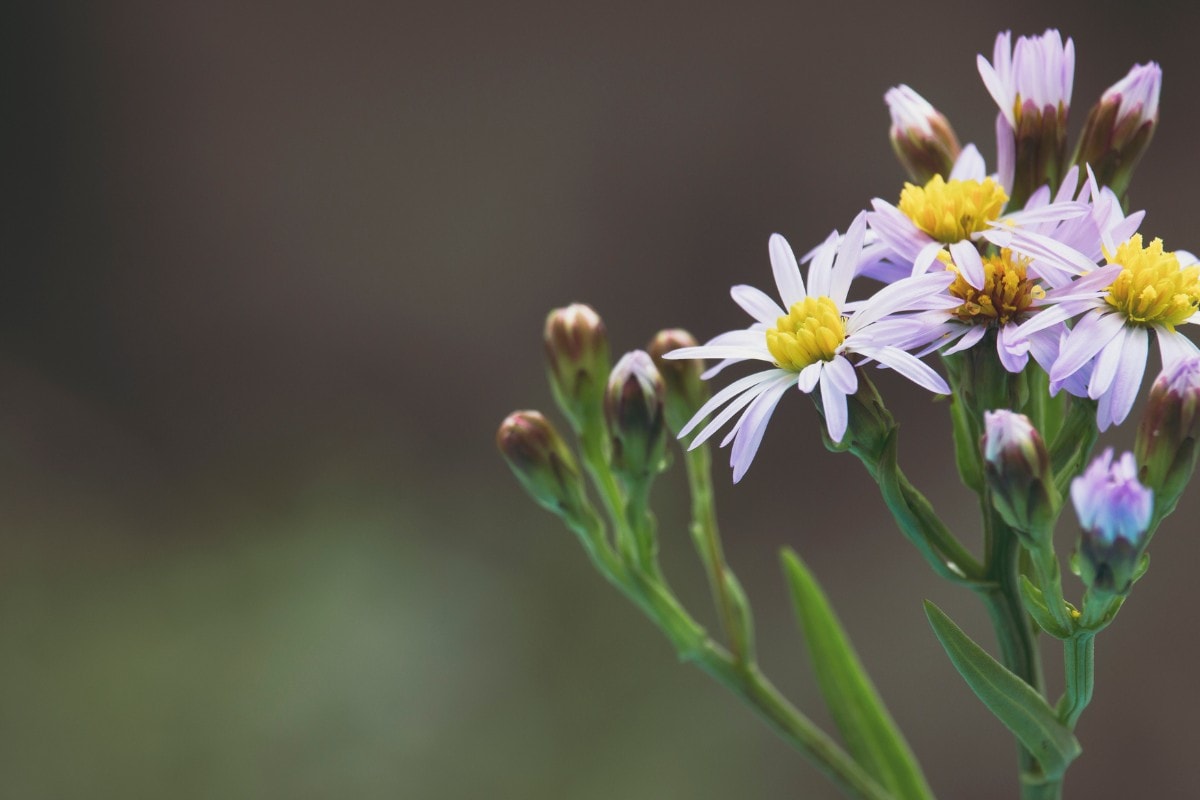
Sea aster is an edible coastal plant found in salt marshes, estuaries, and coastal areas across Europe and parts of Asia. It has tender, salty succulent leaves, which can have a complex sweet flavor with hints of iron and nut. The young leaves and shoots are the most commonly consumed parts of sea asters. They are used raw in salads or cooked like spinach.
29. Sopropo
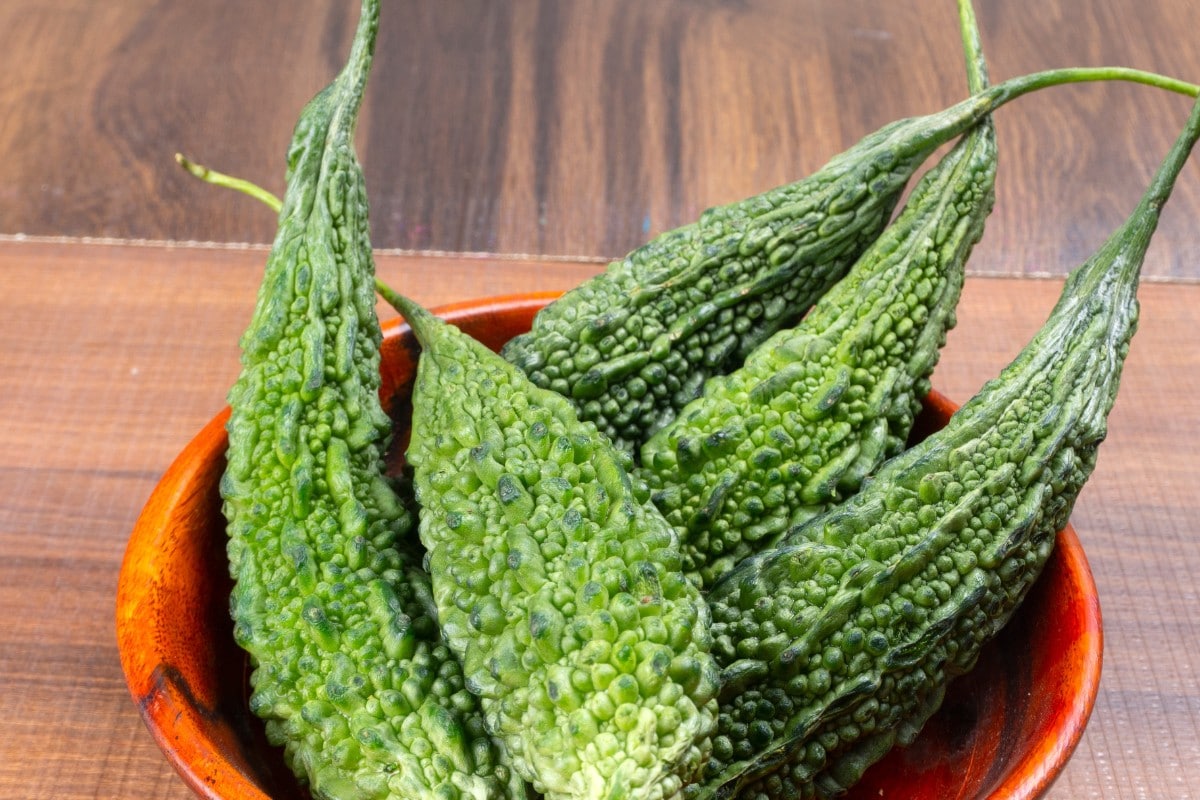
Sopropo, also known as bitter melon or bitter gourd, is a tropical vine cultivated for its edible fruit. The fruit has a warty exterior and an oblong shape that can vary in size. Sopropo is known for its sharp, bitter taste and is a staple in many Asian, African, and Caribbean cuisines. It is often used in stir-fries, soups, and teas. Despite its bitterness, sopropo is valued for its potential health benefits and is sometimes used in traditional medicine practices.
30. Snow Peas
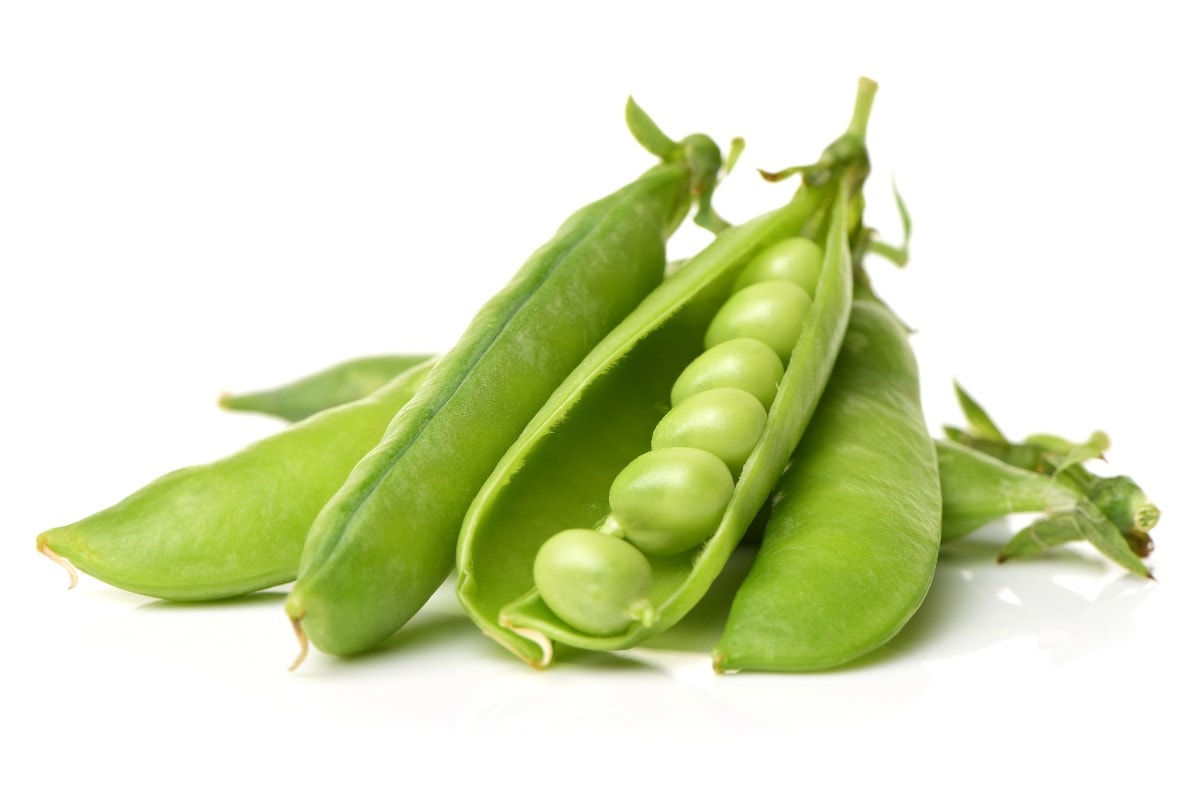
Snow peas are edible pod peas with flat pods and thin pod walls, eaten whole while still unripe. They have a sweet and slightly grassy taste and are added to stir-fries, salads, and side dishes. Their crisp and crunchy texture when fresh adds a nice snap to dishes.

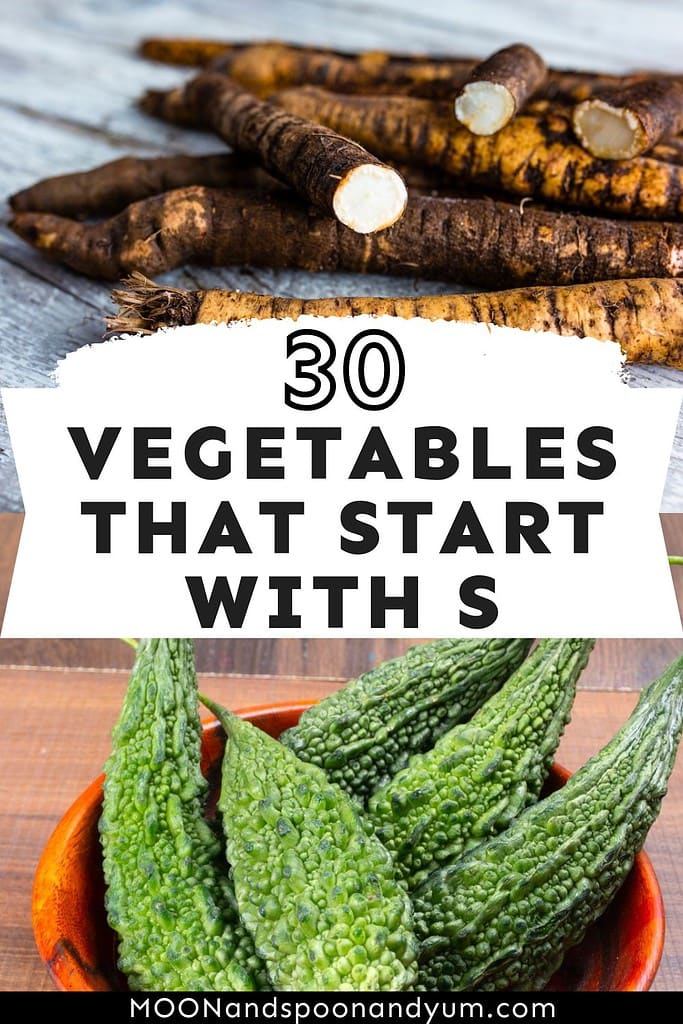
I love experimenting with new recipes and this list is a goldmine. You’ve given me so many recipe ideas! Snake gourd and spigarello are next on my list.